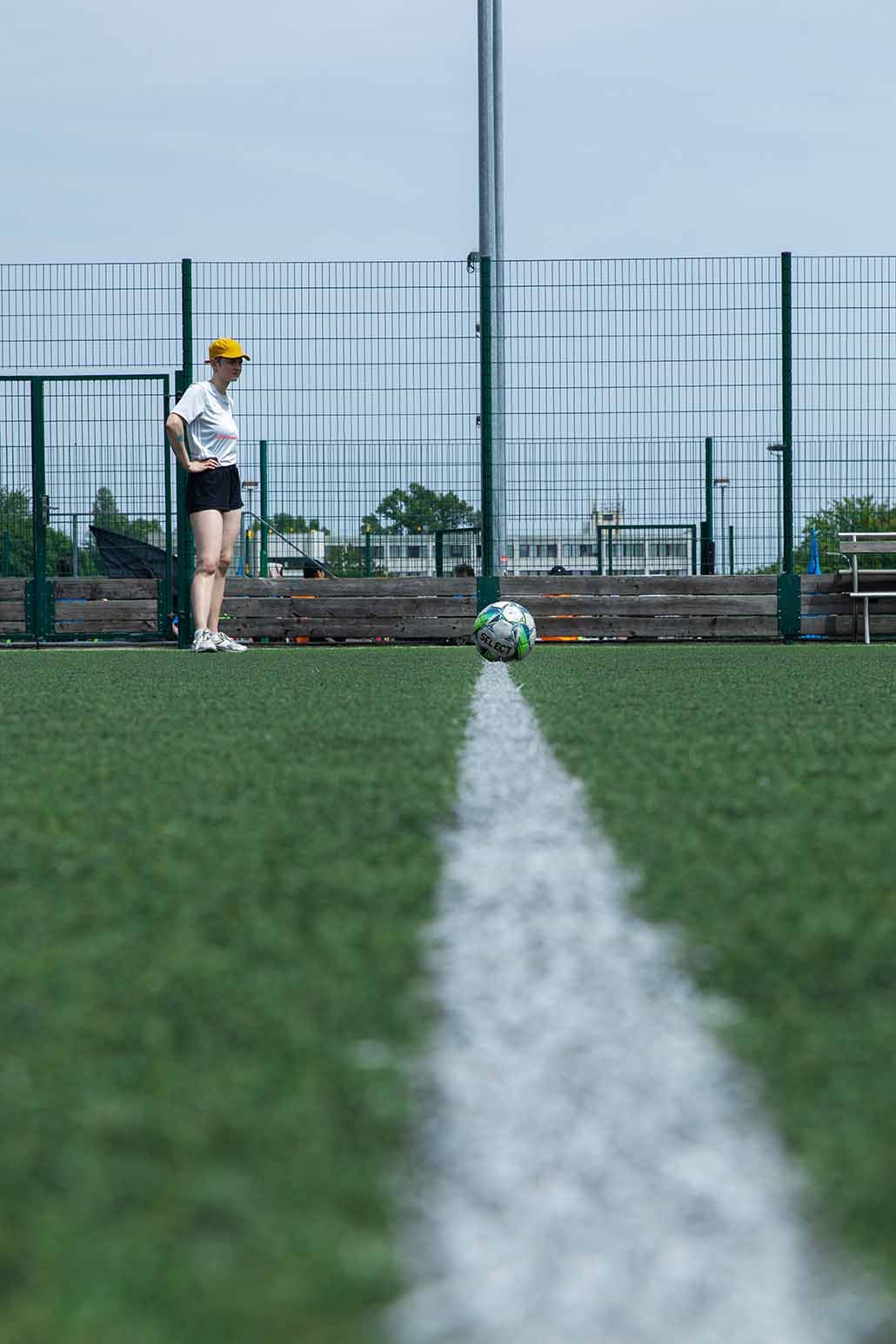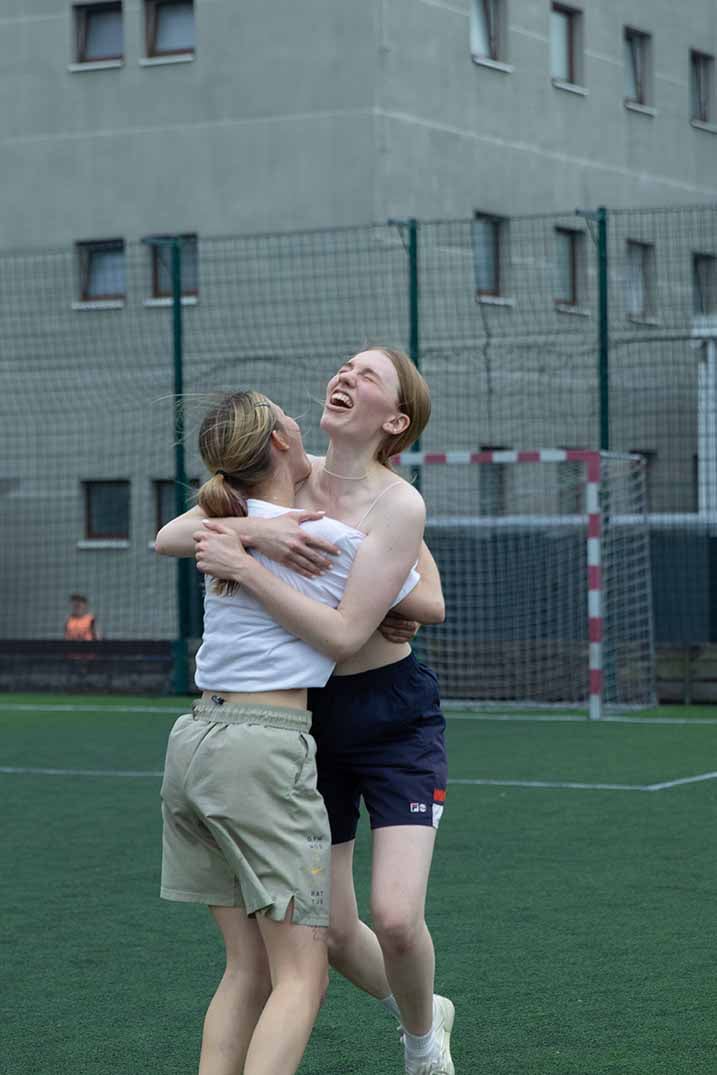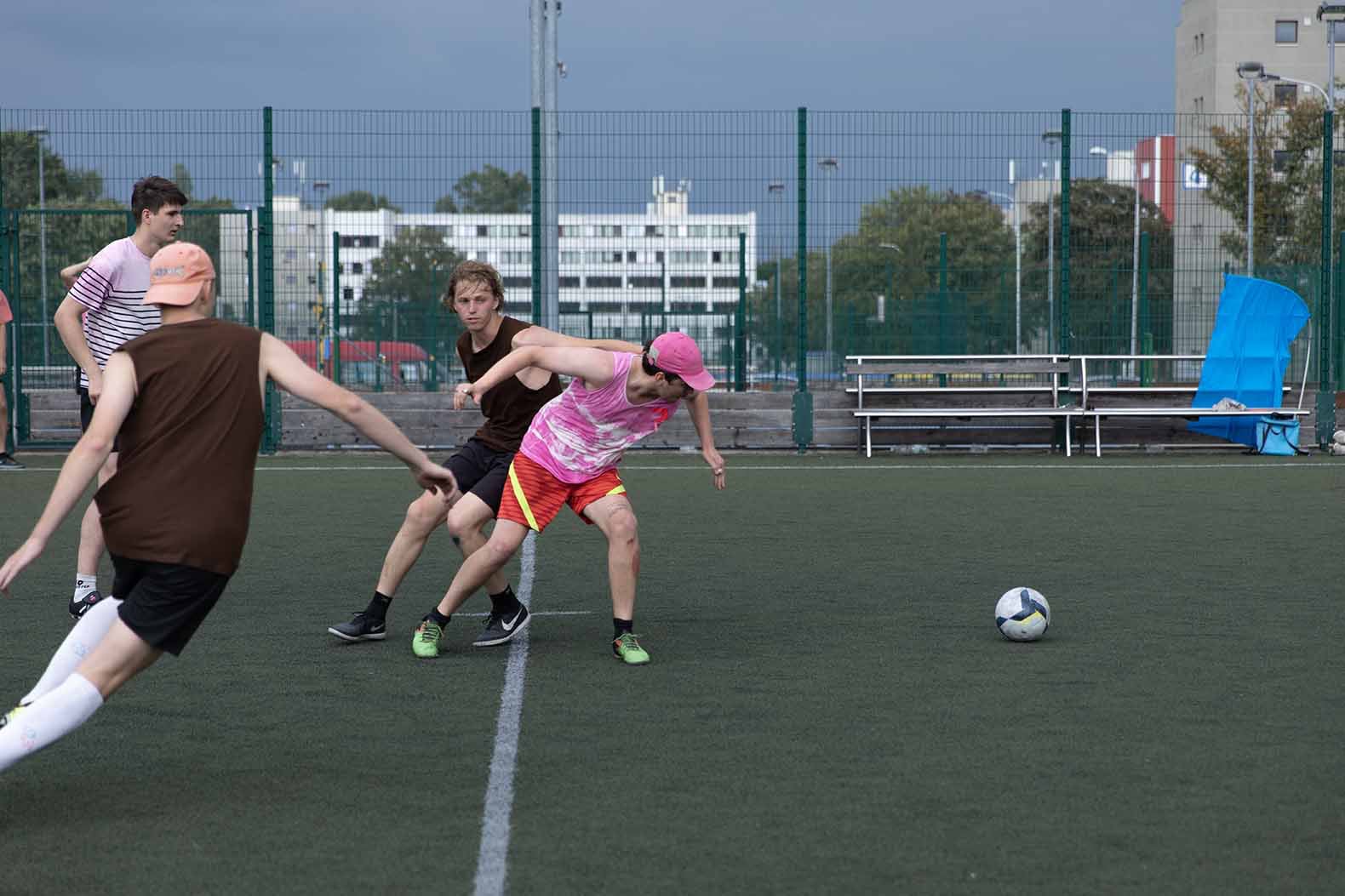As recently observed by the chief curator of the Moravian Gallery, Ondřej Chrobák, sports have increasingly begun to influence art and design – take, for instance, the exhibition "Get on the Ice!" at the National Gallery Prague or the "Art Grand Slam" at the SmetanaQ Gallery. The romantic notion of the struggling, tortured artist of the 19th century or the intellectual of the First Republic era, brush in one hand and cigarette in the other persists – even though reality often was and is quite different. The stereotypical image of a visual artist, designer, or architect rarely aligns with a sculpted, athletic body. Over the centuries and decades, circumstances have changed, and the illusions of bohemianism and the timelessness of artistic work are a thing of the past. Today’s creative geniuses no longer wander the countryside like Karel Hynek Mácha or Caspar David Friedrich once did. However, like everyone else, they seek out physical activity in the gaps of their everyday lives. While it might be misleading to create a unified image of contemporary artists as passionate athletes, we can still ask: what drives the youngest generation of Czech creators to organize shared sporting activities, such as the Football Tournament for the Graphics Cup at Prague’s UMPRUM? How does football work in mixed teams with varying experience levels in the sport? And can physical activity become a source of new artistic inspiration, or is it more about physical and mental well-being, providing a break from the creative process?

In a Healthy Body, a Healthy Muse
It’s a muggy June day, with clouds drifting over Prague, and the air feels heavy with moisture – it’s hard to take a deep breath. Yet, dozens of young people are dashing around on two small football fields between the dormitories at Strahov. This isn’t a sports club training session or a casual game among the dorm residents – it’s the start of the third Football Tournament for the Graphics Cup of the Academy of Arts, Architecture, and Design in Prague (UMPRUM). The teams aren’t distinguished by traditional jerseys with sponsor logos; instead, the players have created their own uniforms from simple T-shirts and tank tops. The tournament organizers assigned each team a color to represent, but the overall design of their sportswear was left to the teams’ mutual agreement and creative flair.
„
Only a few of us are really into sports, so it’s interesting to find ourselves in a situation that brings out studio solidarity and healthy competition.
Although fewer teams participated this year compared to the previous tournament, attendance on the field and in the stands is still strong, despite the challenging weather. The courtyard between the dorm buildings, with the iconic stadium in the background, enhances the atmosphere of a carefree summer and student camaraderie. Those not on the field are enjoying refreshments at nearby dorm cafes or resting in the shade along the sidelines. But what makes this seemingly ordinary school (albeit organized within an academic setting) football tournament special for its participants?
Jakub Demartini, a recent graduate of Photography Studio 2, has taken part in the football tournament for the third time, even though he only completed his master’s degree at UMPRUM. Although his studio team didn’t make it to the semifinals this year, he still views the event positively. "Compared to last year, the team presentations weren’t as flashy. For example, Petr Babák’s studio (head of the Graphic Design and New Media Studio, ed.) had a much bigger hype last year, with smoke bombs and flags. So, this year felt more subdued, probably due to the weather. After we got knocked out, our studio went for fried cheese and then went swimming," Jakub recalls. He sees the tournament, after three editions, as an unusual, almost festive occasion. "The tournament puts us in a different environment. We sometimes go out for a beer together, but this creates or deepens our bond. Only a few of us are really into sports, so it’s interesting to find ourselves in a situation that brings out studio solidarity and healthy competition." When asked about the natural differences among participants with varying levels of football experience, he says: "At first, I thought it would just be a fun kickabout, but then I saw a few people who seemed to have big ambitions, which I get, especially if they’ve been playing football since childhood. It’s nice to see that they’re mindful of their teammates and opponents, understanding that not everyone can keep up in those cases."

Sofie Gjuričová, a student from Architecture Studio 2, used to play football as a child. After a long break during her teenage years, she returned to the sport a few years ago and now trains once a week with a mixed non-academic team. She sees the Graphics Cup Tournament not just as a social event but also as an interesting situation where mixed teams, sometimes predominantly female, compete against mostly male teams. "But no one is intimidated by this; everyone just takes it as a chance to play together," she adds. "It kind of changes the nature of football itself – it’s not necessarily about winning or performance, but about how you move."
Creativity in the Mind, Strength in the Soul
Both Sofie and Jakub view the Football Tournament for the Graphics Cup as an opportunity to be active together and to enjoy the day under the motto "it's not important to win, but to participate," from the morning warm-up to the evening finals. For both, maintaining fair play and teamwork is essential, such as ensuring enough player rotations or avoiding solo, high-stakes gameplay. While Sofie mentions that pétanque is often played in the garden of the Mikulandská Technology Center, Jakub and I reflect on how the school could further support students' shared leisure time through sports in the future. Ultimately, we agree that the initiative should come from the students themselves, even though many universities lack sufficient sports facilities.

The Football Tournament organized by the students of the Academy of Arts, Architecture, and Design (UMPRUM) is an event free from the stereotypical symbols of traditional competitive sports. It's simply an opportunity to spend time being active or cheering from the stands, to let go of academic worries, and to enjoy the game together – unlike in professional sports, the final results don't matter. A fitting parallel to this organized sports activity can be found in the creative work done within an art school. The deadline for final projects at the end of each semester is a sort of finish line, and a well-chosen pace is the best way to reach it without total exhaustion. Just like athletes, creators learn from their previous experiences, testing the limits of their strengths and abilities. And, just as in sports, in creative work, it's essential to know when you're on the verge of burnout and need to rest – this is where the connection between creative work and physical activity emerges. Although the June heat can make the tournament more challenging, the period after the defense of final or diploma projects is the perfect time for a reunion. Changing the environment, putting on team-made jerseys, and letting the gradually rising adrenaline and endorphins take over, in the familiar setting of the dorms, being swept up by the game or the cheering.
Historical Context
If we take a moment to look back at history, it becomes clear that physical activity and spending time outside the studio or creative spaces have long been important for creative individuals. Take, for example, Caspar David Friedrich, one of the leading figures of Romanticism, who was born two hundred years ago this year. Although he wasn't an athlete in the modern sense, in line with the Romantic departure from bourgeois life, he became a wanderer in the mountains and highlands of Bohemia and Germany. The recurring motif in many of his key paintings was the landscape, often seen after a long and undoubtedly challenging climb to the peak at dawn.
Another intriguing figure in modern art in this regard is František Kupka, who spent his life trying to capture movement in the seemingly static medium of oil painting. Additionally, every morning, he practiced yoga with his entire family in the garden of his house in Puteaux – completely naked, in defiance of the moral standards of the time in Europe. The human body in motion also fascinated painter Jiří Načeradský, and in the context of the totalitarian regime, one might wonder if he longed to run toward freedom through his paintings.





